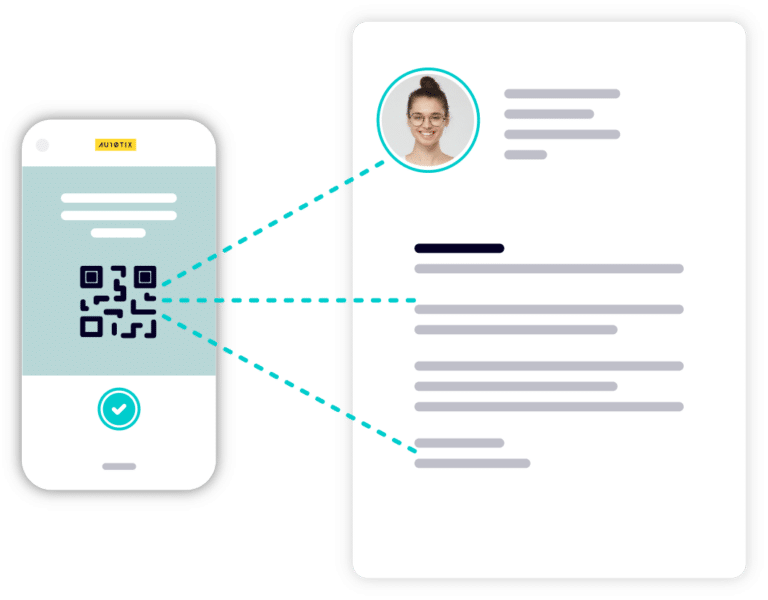Digital Identity Verification – Solutions for Modern Security Needs
The Importance of Digital ID Verification
It’s no secret that once digital technology made its debut, our world completely changed. Having an online presence meant making new connections and reaching new audiences; for business owners, it meant having a platform to quickly scale their business. As time progressed, so did technology; today, what was once considered a luxury now seems necessary for our everyday life. With just a few gestures on a screen, you can access your calendar, pay with a stored credit card, check in with friends, or do whatever. However, with the accumulation of this vast database, fraudsters found ways to exploit personal information for personal gain. As convenient as technology is, it’s important to be aware of fraud in the technological space and understand what you can do to prevent it.
Digital ID verification allows businesses to confirm the authenticity of a customer identity online, reducing the risk of identity theft and fraud. Consider an online bank that needs to verify the identity of a new customer opening an account. Digital identity verification solutions can quickly and accurately confirm the customer’s identity, ensuring the account is not opened under a false name.
Moreover, digital ID verification can prevent unauthorized purchases in the context of online shopping. Have you ever checked your bank account to be met with a series of unidentified purchases? I certainly have. The cybercriminal who obtained my credit card information was having the time of his life in Turkey, spending money as if there was no tomorrow. At the time, I didn’t have digital ID verification, and they could easily make fraudulent purchases. In hindsight, with digital identity verification solutions, the retailer can confirm that the person making the purchase isn’t me and can decline the charges.
Key Challenges in Digital Identity Management
Digital identity management comes with its own set of challenges. One major challenge is the balance between security and user convenience. Users expect everything to be quick and easy, but this can sometimes compromise security measures. On the flip side, let’s say you were casually shopping online, and you found the perfect gift for your pet! You go to check out, and the website prompts you to name your fifteen favorite colors, the name of your fourth-grade teacher, how many grains of sand are in your backyard, and what your height is in milk bottles. These examples are ridiculous, but I’m trying to prove my point; overly complex verification processes may deter customers from completing their transactions.
Another challenge is dealing with the evolving nature of cyber threats. Hackers and fraudsters are continually developing new methods to bypass security measures. For example, deepfake technology, which can create convincing but fake video and audio recordings, poses a significant threat to digital identity verification processes. It’s crucial for digital identity verification services to stay ahead of these threats. AU10TIX, for instance, employs sophisticated AI algorithms to detect and counteract deepfake attempts, ensuring that only genuine identities are verified.
Additionally, data privacy is a growing concern. Users are increasingly aware of how their personal information is being used and stored. Digital identity verification services must ensure that they not only protect user data from breaches but also follow data protection regulations such as GDPR and CCPA.
Meet AU10TIX Digital ID Solution
Future-ready
Prepare your business for evolving verification needs and industry changes.
Full automation
X2 higher automation rate than other solutions in the market.
Effortless onboarding
Enjoy seamless user experiences with frictionless digital ID verification.
Features of AU10TIX’s Digital Identity Verification Service
We at AU10TIX strive to give you the best answer to any problem and to do so, we have varying features to meet changing security needs.
• Automated Document Verification: This service scans and verifies government-issued IDs in real-time. For instance, a new user signing up for a cryptocurrency exchange can simply upload a photo of their passport. AU10TIX’s system will then authenticate the document by checking for security features, such as watermarks and holograms, ensuring that it is not counterfeit.
• Biometric Verification: This method uses facial recognition and other biometric data to confirm a user’s identity. For example, let’s say an online lender wants to verify the identity of a loan applicant. The lender can require a selfie with the uploaded ID, and AU10TIX can match the face in the selfie with the photo on the ID, ensuring they are the same person.
• AI-Powered Fraud Detection: This technology leverages artificial intelligence to detect and flag fraudulent activities. For example, if a pattern of unusual login attempts from different geographic locations is detected, the system can flag the account for further review.
• Global Coverage: Supports ID verification for various countries and document types. This is particularly useful for international companies that operate in multiple regions and need to verify customers’ identities from different countries.
These features ensure that our digital identity verification service is reliable and efficient. Let us help you by providing the necessary tools to protect your digital presence and customers.
Revolutionize the way you authenticate and interact in the digital realm


Complete digital ID management

Advanced data extraction

Third-party validation

Innovative digital appearance flow

Real-time processing
Digital ID Verification Process
We’ve talked a lot about digital IDs and their use; now, let’s understand how this generally happens.
1. Data Capture: The user submits their identification document and, in some cases, a selfie. For instance, during the registration process for an online investment platform, a user might be asked to upload a photo of their driver’s license and take a selfie.
2. Document Authentication: The submitted ID is scanned and analyzed to verify its authenticity. Our technology checks for various security features and compares the information on the document against trusted databases.
3. Biometric Comparison: Facial recognition technology compares the user’s selfie to the photo on the ID. This step ensures that the person holding the ID is the same person in the selfie.
4. Verification Outcome: The system provides a result indicating whether the verification was successful or if further action is required. The system can request additional information or flag the account for manual review if discrepancies are found.
Industries Leveraging Digital Identity Verification Solutions
Banking and Financial Services
The banking sector has been one of the earliest adopters of digital identity verification solutions. Banks can offer customers a secure online banking experience by implementing these services. For example, when a customer opens a new account online, the bank can use digital identity verification to confirm their identity, preventing identity theft and fraud.
E-commerce
E-commerce platforms rely on digital identity verification to protect against fraudulent transactions and account takeovers. Imagine an online retailer that requires customers to verify their identities before making high-value purchases. This can prevent fraudulent transactions and chargebacks, saving the retailer significant costs.
Healthcare
In the healthcare industry, digital identity verification ensures that patient records are accessed only by authorized individuals. This protects sensitive medical information and helps comply with privacy regulations. For instance, when patients register for telemedicine services, digital identity verification can confirm their identity, ensuring that their medical data is accessed only by legitimate users.
Travel and Hospitality
Travel companies use digital identity verification to ease check-in and enhance security. For example, an airline can use digital identity verification to confirm passenger identities during online check-in, ensuring that only legitimate ticket holders board the flight.
Gig Economy
For platforms in the gig economy, verifying the identities of both service providers and clients is crucial. Digital identity verification services help ensure that all parties involved are legitimate. For instance, a ride-sharing service can use digital identity verification to confirm the identities of both drivers and passengers, enhancing safety for everyone involved.
Future Trends in Digital Identity Verification
As advanced as it is already, digital identity verification can cast its net even further:
– Increased Use of Biometrics: Biometric technologies, such as fingerprint and iris scanning, will become more prevalent. Smartphones are already integrating these technologies to unlock devices and authorize transactions.
– Blockchain Technology: Blockchain can provide a decentralized and secure method for verifying identities. Imagine a scenario where individuals control their own digital identities stored on a blockchain, providing an authentic identity record that service providers can easily verify.
– AI and Machine Learning: These technologies will continue to enhance the accuracy and efficiency of digital identity verification solutions. AI algorithms can learn from vast amounts of data to improve fraud detection capabilities over time.
– Privacy-Enhancing Technologies: Solutions that offer strong privacy protections will become increasingly important as concerns about data security grow. For instance, zero-knowledge proofs allow users to verify their identities without revealing sensitive personal information.
How to Choose the Right Digital ID Verification Service?
Choosing the right digital ID verification service requires careful consideration of several factors:
1. Security Features: Ensure the service includes advanced security measures such as biometric verification and AI-powered fraud detection. Look for features like liveness detection to ensure that biometric data is captured from a live person rather than a photo or video.
2. User Experience: Look for a service that offers an all-around user-friendly experience. For example, a mobile-friendly verification process can enhance user satisfaction and completion rates.
3. Compliance: Ensure the service complies with relevant regulations and standards. This is mandatory to avoid legal issues and ensure that user data is handled responsibly.
4. Scalability: Choose a solution that can scale with your business as it grows. If you plan to expand internationally, ensure the service can handle ID verification for users in different countries.
5. Support and Coverage: Consider the level of customer support offered and the geographical coverage of the service. Reliable customer support can help quickly resolve any issues that arise during the verification process.







